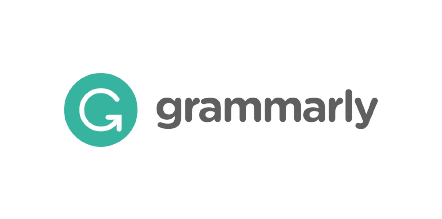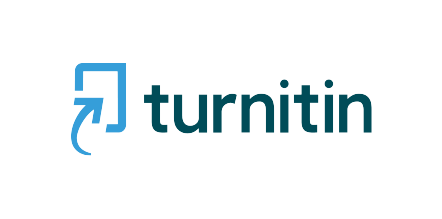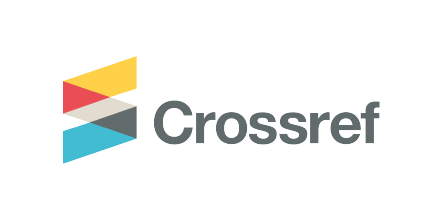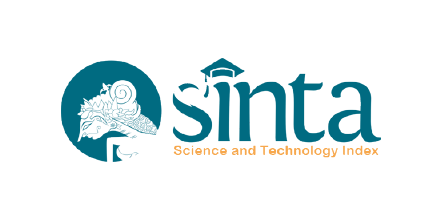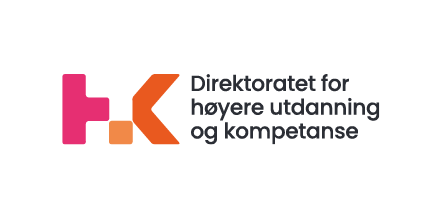Activities for Fostering Disability Awareness and Friendship in Inclusive School
DOI:
https://doi.org/10.21776/ub.ijds.2018.5.1.12Keywords:
disability awareness, friendship, inclusive school, activitiesAbstract
Fostering disability awareness is important to improve peer acceptance and friendship between students with special needs and regular students. This study is a narrative review of previous research on activity for fostering disability awareness. We reviewed 16 studies that fit the criteria that we found on E-resources National Library of Indonesia. We find some activity to build awareness, namely, reading books about disability, peer network strategy, thematic intervention, puppets show, drawing comics, simulation, play intervention and sports activities. These activities can be references for teachers to improve acceptance and friendship in inclusive schools.
References
Ahmmed, M., Sharma, U. and Deppeler, J. (2012) Variables affecting teachers attitudes towards inclusive education in Bangladesh'. Journal of Research in Special Educational Needs • 12(3). 132-140.
Alves, S., & dos Santos, P. L. (2013). Bringing disability awareness into the general curriculum. In Future directions: uncertainty and possibility: european conference on curriculum studies.
Antara News Sumbar (2013, 22 Juni). Jumlah Sekolah Inklusif Bertambah Dua Kali Lipat diperoleh pada 3 Maret 2018 dari https://sumbar.antaranews.com/berita/45350/jumlah-sekolah-inklusif-bertambah-dua-kali-lipat.
Artman-Meeker, K., Grant, T. O., & Yang, X. (2016). By the book: Using literature to discuss disability with children and teens. Teaching Exceptional Children, 48(3), 151-158.
Carter, E. W., Asmus, J., & Moss, C. K. (2013). Fostering Friendships: Supporting Relationships Among Youth With and Without Developmental Disabilities. Prevention Researcher, 20(2), 14-17.
Cook, B. G. and Semmel, M. I. (1999) ‘Peer Acceptance of Included Students with Disabilities as a Function of Severity of Disability and Classroom Composition’, The Journal of Special Education, 33(1), 50–61.
de Boer, A., Pijl, S. J., Minnaert, A., & Post, W. (2014). Evaluating the effectiveness of an intervention program to influence attitudes of students towards peers with disabilities. Journal of Autism and Developmental Disorders, 44(3), 572-583.
Dunst, C.J. (2014). Meta-analysis of the effects of puppet shows on attitudes toward and knowledge of individuals with disabilities. Exceptional Children, 80(2), 136-148.
Fiorello, C.A., Boyer, J.A., & Thompson, R.J. (2008). Inclusion. In N. J. Salkind & K. Rasmussen (Eds.), Encyclopedia of Educational Psychology (Vol. 2, pp. 508-511). Thousand Oaks, CA: SAGE Publications.
Friend, M. & Shamberger, C.T. (2008). Inclusion. In T.L.Good (Ed.), 21st Century Reference Series. 21st Century Education: A Reference Handbook Vol. 2 (124-131). Thousand Oaks, California: SAGE Publications.
Heiman T. (2000) Friendship quality among children in three educational settings. Journal of Intellectual and Developmental Disability 25, 1-12.
Hurst, C., Corning, K., & Ferrante, R. (2012). Children's acceptance of others with disability: The influence of a disability-simulation program. Journal of Genetic Counseling, 21(6), 873-883.
Ison, N., McIntyre, S., Rothery, S., Smithers-Sheedy, H., Goldsmith, S., Parsonage, S., et al. (2010). "Just Like You": A Disability Awareness Programme For Children That Enhanced Knowledge, Attitudes And Acceptance: Pilot Study Findings. Developmental Neurorehabilitation, 13, 360-368.
Juvonen, J. Wang, Y. & Espinoza, G. (2011). Bullying Experiences and Compromised Academic Performance Across Middle School Grades.  The Journal of Early Adolescence 31(1):152-173.
Konishi, C., Hymel, S., Zumbo, B. D., & Li, Z. (2010). Do school bullying and student teacher and academic achievement. Canadian Journal of School Psychology, 25(1), 19-39.
Lee, S., Yoo, S. and Bak, S. (2003) "Characteristics of Friendships Between Children with and without Mild Disabilities", Education and Training in Developmental Disabilities, 38(2), 157-166.
Lindsay, S., & McPherson, A. C. (2012). Strategies for improving disability awareness and social inclusion of children and young people with cerebral palsy. Child: Care, Health & Development, 38(6), 809-816.
Litvack, M. S., Ritchie, K. C., & Shore, B. M. (2011). High- and average-achieving students' perceptions of disabilities and of students with disabilities in inclusive classrooms. Exceptional Children, 77(4), 474-487.
Louari, M., Paparousi, M. (2009). Do children with disabilities have friends? In Ines Gomes, Rui Leonardo Maia (Eds): "Special Education: From Theory to Practice" (pp. 513-520). Praga- Portugal: Universidade Fernando Pessoa editions.
McDougall, J., De Wit, D. J., King, G., Miller, L. T., & Killip, S. (2004). High school-aged youth's attitudes toward their peers with disabilities: The role of school and student interpersonal factors. International Journal of Disability, Development and Education, 51, 287-313.
Moore, D., & Nettelbeck, T. (2013). Effects of short-term disability awareness training on attitudes of adolescent schoolboys toward persons with a disability. Journal of Intellectual and Developmental Disability, 38(3), 223-231.
Morin, D., Rivard, M., Crocker, A., Boursier, C., & Caron, J. (2013). Public Attitudes towards
Nowicki, E. A., & Brown, J. D. (2013). "A Kid Way": Strategies for Including Classmates With Learning or Intellectual Disabilities. Intellectual & Developmental Disabilities, 51(4), 253-262.
O'Connor, E. (2016). The use of 'Circle of Friends' strategy to improve social interactions and social acceptance: a case study of a child with Asperger's Syndrome and other associated needs. Support For Learning, 31(2), 138-147.
O'Neill, B. E. (2013). Improvisational play interventions: Fostering social-emotional development in inclusive classrooms. YC Young Children, 68(3), 62.
Osborne, A.G.Jr. (2008). Inclusion. In C. J. Russo (Ed.), Encyclopedia of Edu-cation Law (Vol. 1, 458-459). Thousand Oaks, CA: SAGE Publications.
Price, C. L., Ostrosky, M. M., & Santos, R. M. (2016). Reflecting on Books That Include Characters With Disabilities. YC: Young Children, 71(2), 30-37.
Ranson, N. J. and Byrne, M. K. (2014) "Promoting Peer Acceptance of Females with Higher-functioning Autism in a Mainstream Education Setting": A Replication and Extension of the Effects of an Autism Anti-Stigma Program", Journal autism Developmental Disorder. 44, pp. 2778-2796.
Rillotta, F. and Nettelbeck, T. E. D. (2007) "Effects of an awareness program on attitudes of students without an intellectual disability towards persons with an intellectual disability", Journal of Intellectual & Developmental Disability, 32(1): 19-27.
Roberts, C. & Zubrick, S. 1992. Factors influencing the social status of children with mild academic disabilities in regular education classrooms. Exceptional Children, 59(3), 192-202.
Salend,S.J. & Duhaney, L.M.G (1999). The Impact of Inclusion on Students With and Without Disabilities and Their Educators. Remedial and Special Education Vol 20(2). 114-126.
Seidler, C. O. (2011). Fighting Disability Stereotypes with Comics: "I Cannot See You, But I Know You Are Staring at Me". Art Education, 64(6), 20-23.
Sheehy, K. & Budiyanto. (2015) "The Pedagogic Beliefs of Indonesian Teachers in Inclusive Schools", International Journal of Disability, Development and Education, 62(5), pp. 469-485.
Sigmon, M. L., Tackett, M. E., & Azano, A. P. (2016). Using children's picture books about autism as resources in inclusive classrooms. The Reading Teacher, 70(1), 111-117.
Tempo.co. (2017, 22 September). Sarana Pendidikan Inklusif Harus Diperluas diperoleh 3 Maret 2018 dari https://nasional.tempo.co/read/911696/sarana-pendidikan-inklusif-harus-diperluas.
Tindall, D. (2013). Creating disability awareness through sport: exploring the participation, attitudes and perceptions of post-primary female students in Ireland. Irish Educational Studies, 32(4), 457-475.
Tkachyk, R. E. (2013). Questioning secondary inclusive education: Are inclusive classrooms always best for students?. Interchange, 44(1-2), 15-24.
Wilkins, J., Howe, K., Seiloff, M., Rowan, S., & Lilly, E. (2016). Exploring elementary students' perceptions of disabilities using children's literature. British Journal of Special Education, 43(3), 233-249
Williamson, C. (2014). Effects of Disability Awareness Educational Programs on an Inclusive Classroom Honors Projects. Paper 134.
Yu, S; Ostrosky, M.M; Fowler, S. A. (2012) "Measuring Young Children's Attitudes Toward Peers With Disabilities Measuring Young Children's Attitudes Toward Peers With Disabilities": Highlights From the Research, Topics in Early Childhood Special Education, 32(3), pp. 132-142.
Downloads
Published
How to Cite
Issue
Section
License
Copyright (c) 2018 Ossy Firstanti Wardany, Wagimin, M. Furqon Hidayatullah

This work is licensed under a Creative Commons Attribution-NonCommercial 4.0 International License.







